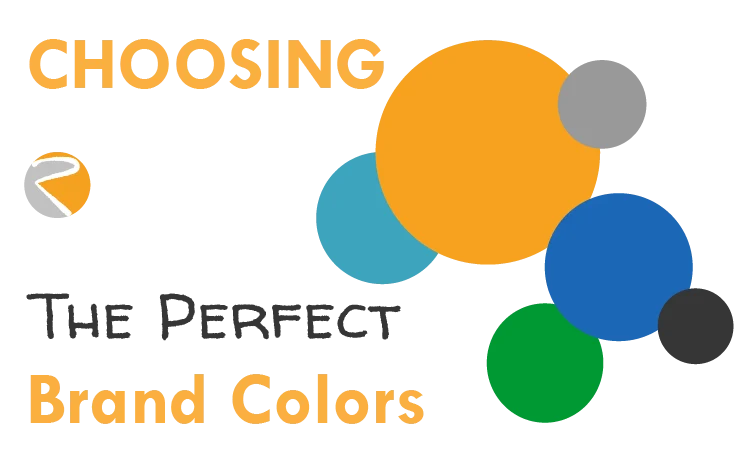Let’s talk about something that’s both visually stunning and strategically powerful: brand colors. Choosing the right colors for your brand is more than just picking what looks pretty. It’s about crafting a visual language that speaks directly to your target audience, evokes the right emotions, and ultimately, drives business growth. Let’s dive in!
Why Brand Colors Matter
Think about some of the most iconic brands in the world. What comes to mind? Their logos, of course, but also their colors. Those colors are instantly recognizable, conveying the brand’s personality and values without a single word. That’s the power of strategic brand colors.
Making a Lasting First Impression
In the blink of an eye, your brand colors can make or break a first impression. They’re often the first thing people notice, setting the tone for their entire perception of your business. Choosing the right brand colors can communicate professionalism, trustworthiness, innovation, or any other brand attribute you want to project.
Connecting with Your Target Audience
Different colors evoke different emotions. Understanding the psychology of color is crucial for connecting with your target audience on an emotional level. For example, blue often represents trust and stability, while red can convey excitement and energy. Careful selection of brand colors ensures you’re speaking the right visual language to your ideal customers.
Building Brand Recognition
Consistency is key to building brand recognition. Using the same brand colors across all your marketing materials – from your website to your business cards – reinforces your brand identity and makes it instantly recognizable. This visual consistency helps build trust and strengthens your connection with your audience.
The Psychology of Color: Understanding the Basics
Before you start picking colors at random, it’s essential to understand the psychology behind them. Here’s a quick overview of some common color associations:
- Blue: Trust, stability, professionalism, calmness
- Red: Energy, excitement, passion, urgency
- Green: Growth, nature, health, prosperity
- Yellow: Happiness, optimism, creativity, warmth
- Orange: Enthusiasm, creativity, playfulness, affordability
- Purple: Luxury, sophistication, wisdom, royalty
- Black: Power, elegance, sophistication, mystery
- White: Purity, cleanliness, simplicity, peace
(Remember, these are just general associations. Cultural context and individual experiences can also influence color perception.)
Choosing the Right Brand Colors: A Step-by-Step Guide
Now, let’s get down to business. Here’s a step-by-step guide to help you choose the perfect brand colors for your business:
1. Define Your Brand Personality
What are the core values of your brand? What kind of image do you want to project? Are you professional and corporate, or creative and playful? Defining your brand personality is the first step to choosing colors that align with your brand identity.
2. Understand Your Target Audience
Who are you trying to reach with your brand? What are their demographics, interests, and values? Understanding your target audience is crucial for selecting colors that resonate with them.
3. Research Your Competitors
Take a look at the colors your competitors are using. You don’t want to copy them, but it’s helpful to see what’s already out there and identify opportunities to differentiate yourself.
4. Consider Your Industry
Some industries have established color conventions. For example, many financial institutions use blue, while healthcare providers often use green or blue. While you don’t have to strictly adhere to these conventions, it’s worth considering them.
5. Create a Color Palette
Once you have a good understanding of your brand personality, target audience, and industry, it’s time to start creating a color palette. A typical brand color palette includes:
- Primary Color: The main color that represents your brand.
- Secondary Colors: Colors that complement your primary color and add visual interest.
- Accent Colors: Colors used sparingly to highlight key elements.
You can use online tools like Adobe Color or Coolors to help you create and explore different color palettes.
6. Test Your Colors
Before you finalize your brand colors, it’s important to test them with your target audience. Get feedback on how the colors make them feel and whether they accurately reflect your brand identity.
Rudtek Can Help!
Choosing the right brand colors is a crucial step in building a successful brand. At Rudtek, we have a team of experienced designers who can help you develop a color palette that perfectly aligns with your brand personality and resonates with your target audience. We offer a wide range of services, including logo design, website design, and custom projects, to help you create a cohesive and impactful brand identity. We also offer website optimization to ensure your website looks great and performs well.
Call to Action
What are your thoughts on brand colors? What colors do you think best represent your business? Share your insights and questions in the comments below! We’d love to hear from you. And if you’re ready to take your branding to the next level, contact us today for a free consultation!







